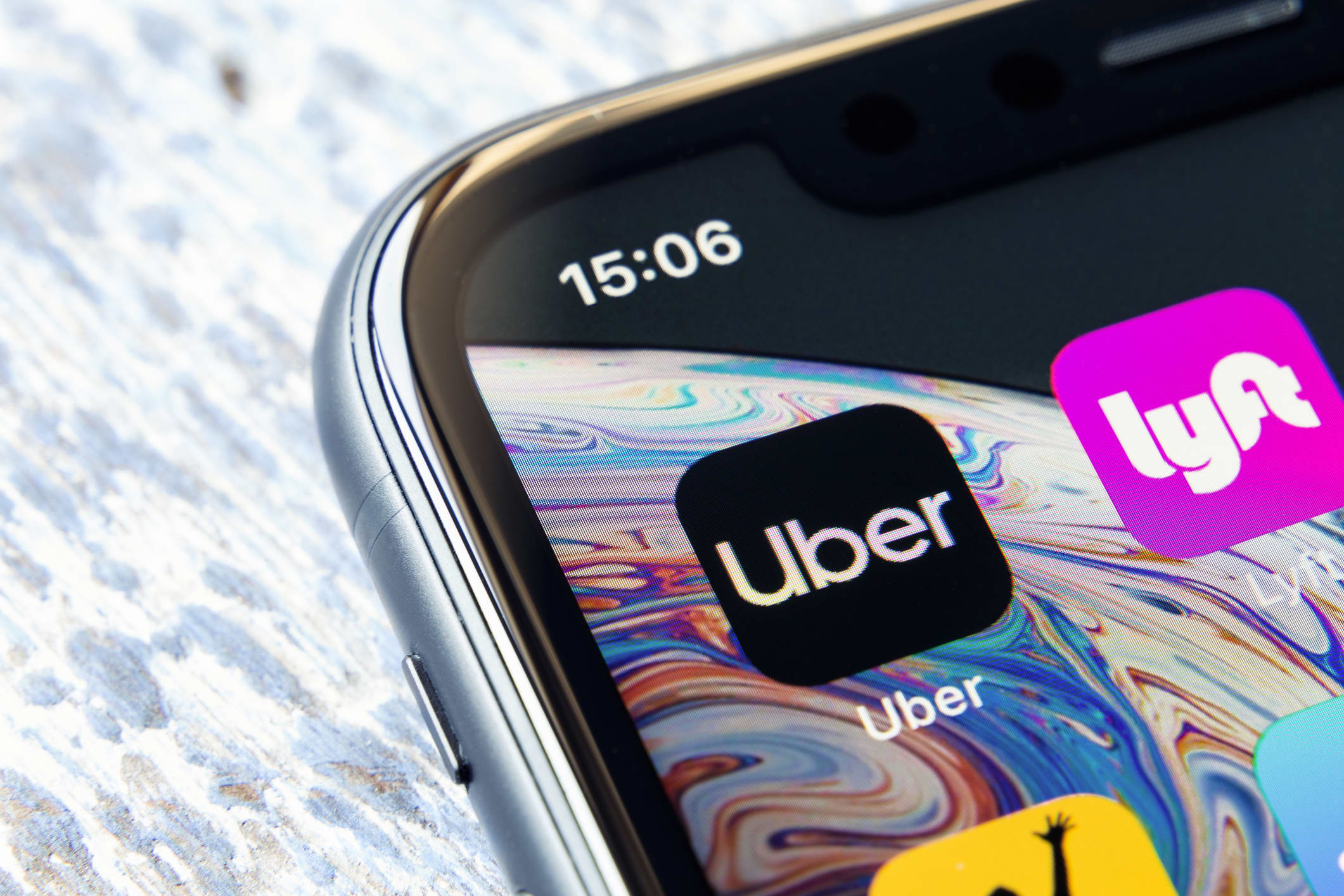In cities around the world, on-demand rides are just a screen touch away. Whether it’s catching a Lyft in Los Angeles or Grab-ing it in Singapore, ridesharing apps have changed the car-hire landscape for good.
The original transport disrupter, Uber, operates in 65 countries and more than 700 cities around the globe. But its reach isn’t all-encompassing. Here is a list of important apps to know when traveling away from home.
The right ridesharing app can save time and frustration later.
Hero Images | Hero Images | Getty Images
Asia
In north Asia, Uber’s broad coverage offers riders options in Hong Kong, Japan, Korea and Taiwan, plus India, Sri Lanka and Bangladesh. Plus, it widely covers Australia and New Zealand. But in China and Southeast Asia, Uber’s footprint is basically nil.
Didi: China’s most prevalent ridesharing app works in English and Mandarin. Long-term expat and Beijing resident Liz Haenle said, “I choose Didi because I’m a foreigner, and it’s the easiest one for me to use.” She also says that because of traffic, bike sharing apps like Mobike are more popular than car booking apps. In addition to China, Didi services six cities in Australia.
Grab: Grab operates in eight countries — Singapore, Cambodia, Indonesia, Malaysia, Myanmar, Thailand, Vietnam and the Philippines — and in more than 500 cities and towns in the region. Beyond ridesharing, the company offers a cashless payment system called GrabPay and a meal delivery service called GrabFood.
Gojek: Starting as a call center tech company that connected riders to motorbikes in Indonesia, Gojek now operates in five countries in Southeast Asia, including Singapore, Indonesia, Vietnam, Thailand and the Philippines. It also offers more than 20 services, most notably GoPay which expanded financial access to millions of unbanked people in Indonesia.
Gojek drivers waiting for passengers in Indonesia.
afif c. kusuma | iStock Editorial | Getty Images
“Gojek and Grab motorbike rides can be indispensable in Jakarta traffic,” said Peter Thorin, an American living in Jakarta. “They can weave through backed-up traffic and get you to where you need to go with much more certainty you’ll arrive on time. They can cut a trip in half.”
Ola: Serving India, Ola lets customers order a variety of vehicles, from premium sedans to tuk-tuks, at a rate that’s sometimes less expensive than Uber.
Europe
“For me, Uber has revolutionized getting around London at night,” said Briton Selina Boyd. “It’s more affordable and the convenience of being able to get (a car) in places where you wouldn’t normally find a black cab very easily has been brilliant.”
Uber is popular in London, but so is Gett.
martin-dm | E+ | Getty Images
Beyond Uber, travelers to Europe should also know about:
BlaBlaCar: This carpooling service in 18 European countries, plus Mexico and Brazil, allows just about anyone to offer a ride. Enter your desired destination, and the app provides a choice of vehicles; riders pick one and pay online. For safety, BlaBlaCar also offers ladies-only options.
Gett: Travelers to the U.K. should know this app, which operates in 25 major cities there, including London, Edinburgh, Manchester, Glasgow and Newcastle. It’s also useful in Israel, Russia and parts of the United States.
Bolt: Operating in 150 cities across Europe, Africa, Mexico and Australia, Bolt aims to offer the lowest-price rides in its markets.
North America
Lyft: The second most downloaded ridesharing app in the U.S. after Uber, Lyft operates in more than 300 markets across the U.S. and Canada. The company also offers scooter and bike rental options.
Christina Mulvihill a busy executive and mom of two young children in the Washington, D.C. metro area, says, “Lyft is definitely more budget friendly. But, I like Uber for the family function that allows my childcare giver to order (a car) and then charge it to me.” But she says, “For business travelers and visitors to the area, Lyft works really well.”
South America
Cabify: Started in Spain in 2011, the company operates in 12 countries and more than 90 cities across Latin and South America.
Cabify operates in 12 countries across Latin and South America.
Courtesy of Cabify
Didi: The most widely-used ridesharing app in China, Didi is also prevalent in Brazil.
Africa
Bolt: This popular European app also provides services in Ghana, Kenya, Nigeria, Tanzania, Uganda and South Africa.
Jrney: Exclusive to South Africa, Jrney offers both ridesharing and carpooling options.
Ridesharing app tips:
1. Download the app before your trip.
2. Set up automatic payments by credit card. Check if overseas credit cards are allowed; some apps still require a local card.
3. Book ahead to sidestep language barriers.
Singapore-based Matt Fry, who travels globally several times a month for business and leisure, said, “Apps are especially helpful in foreign countries where you don’t speak the language. It’s a lot easier to type in the location than to try to tell the taxi driver where you are going.”
4. If a ridesharing app doesn’t provide pre-booking services, local taxis may be a better option.
